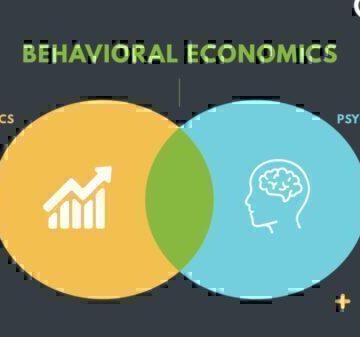Many people find that the journey to financial wellness is smoother when they take the time to create a budget. It might sound complicated but there is a way to break down the process. To get started, see this overview on the steps to take to set a budget and take control of financial health.
Needs vs. Wants
Everyone has a certain amount of money to spend each month. So you need to separate your needs from your wants. Your needs include things like food, medicine, child care, and housing. These are things you can’t live without. Once your needs are taken care of, any remaining money can go to wants. These items are nice to have, but not needed to live. These might be things like cable TV or dinners out.
Being clear on the difference between the things you need, and the things you want is one of the keys to budgeting, especially if money is tight. Resist the temptation to spend money on credit cards to buy things that you don’t need. Living within your means is an important milestone on the journey to financial health.
Define Your Monthly Income
The first step in creating a budget is to define your monthly income. Most people think income is what they earn from their job. But it is vital to include all sources of income in your budget. This includes things like side-jobs and child support.
Next, document the net amount you get from each source. Net income is the amount of money you get after taxes. This is the amount of money that you have available to spend.
Figure Out Your Major Expenses
Your next step is to write down all of your major expenses. Subtract them from your net income. Examples of major expenses include a housing costs, auto payments, and insurance. These are fixed costs. You need to pay them each month. Some major expenses can be paid from quarterly. For these, it is wise to divide the expense over several months. For example, a quarterly payment is divided over 3 months. Set aside money each month for these expenses. Pay them when they become due.
Setting Realistic Goals
The money leftover is for items such as food, gas, and credit cards. It may be hard to define how much you spend on food or gas each month. Try your best to guess for the first month. As the month goes on, track your spending. After you have a clearer idea of your expenses, you can update your budget
Cover High Priorities First, and Set Goals
It’s important to use your available funds to cover your high-priority bills first. You might be surprised at how much money is spent on wants. You can decrease spending by limiting your budget for the “wants” (often called discretionary spending). For example, if you spend $100 per month on dining out, only put $50 in your budget, and stick to it. It takes restraint, but it’s well worth it. The money that you save can go toward paying down the principal of your debts faster (and saving you money on interest). Or you can build your savings or investments.
Stick With It
It will be difficult at first. Most changes aren’t easy. You’re changing your mindset toward your money. That takes time. But the longer you do it, the easier it becomes. It won’t be too long before your budget has become your habit.
Tracking Expenses
Tracking expenses is a key part of the budget. This is how you know if you are staying within the budget you created. For example, you may have allotted $150 for groceries this month, but if you do not track your expenses carefully, you may never notice if you spent $225. Spending more than the budgeted amount in one area requires you to decrease spending in another area. The only other option would be to borrow money on credit, which gets costly if used too much. Tracking expenses will also help you to see where your money is going. You will learn a lot after you spend a month tracking your expenses.
There are several ways to track expenses. The most basic method is to write down all of your expenses in a notebook each day. If you choose to track your expenses in a notebook, make sure to carry it everywhere you go. Otherwise, you may forget to record an expense. When you’re documenting everything, it may be easier to label your spending.
Another technique is to save receipts and document them in a computer. Keep in mind that you may spend money on items for which there is no receipt, like a donation to a co-worker’s birthday gift.
If you use a debit card, you can track your debit card statements. Most banks have websites that allow you to view all of your checking account.
If you like to use a computer, you can track expenses using a software program. Some programs can even be linked to your bank accounts. This allows for immediate updates.
No matter what method you choose to use, it’s key to enter your expenses on a regular basis.
GreenPath Financial Service
Free Debt Counseling
Take control of your finances, get tailored guidance and a hassle-free budgeting experience. GreenPath offers personalized advice on how to manage your money.
Budgeting As A Family
Budgeting should be a family project. Since everyone in the household is affected by the budget, everyone should be aware of what is available to spend — or not spend. Often, there is one designated person in the family that handles the money — balancing the checkbook, paying all the bills, providing allowances, etc. That job can be very stressful if that person does not have the full support and understanding of everybody in the family. A healthy and open approach to money management is good for the entire family.
Set SMART Goals
When developing a family budget, it is good to establish some goals that the family can strive for together. For example, if the whole family knows that their goal is to save for a new house, it will be easier to resist overspending on holidays and entertainment. When establishing goals, it is important to make them SMART: Specific, Measurable, Attainable, Realistic and Timely.
For example, if the goal is to save enough to make a down payment on a new car, a SMART goal might sound something like, “We will set aside $200 each month until we have saved $5,000 for the down payment on our new car.” This goal is very specific and measurable. The goal is also timely because you know exactly how long you will have to set the money aside (for as long as it takes to reach $5,000). However, if you do not have $200 to set aside, this goal would not be attainable or realistic. So it’s important to set the dollar amount at something that you can afford.
Keep Goals Top of Mind and Support Each Other to Reach Them
After developing goals, write them down so you can post them for all to see and review them periodically. It brings a sense of accomplishment to see goals being achieved. Seeing the goals on paper will also inspire you to keep saving for your financial goals. You will recall from the earlier section that setting up a realistic budget involves a balancing act between what you earn and what you spend. You should be allocating money based on the financial goals and values established by your family.
Teachable Moment: Include Your Children in the Process
Parents often ask if they should include their children in the budgeting process. While the children may not need to know how much their parents earn, it is still important to teach children that money is a family asset that is needed to provide the essentials of food and shelter. Too often children are not taught that money is earned through hard work and needs to be spent wisely and carefully. If children know parents are serious about their financial goals, they will often help with them. Children may even help hold you accountable when you think of overspending.
GreenPath Financial Service
Free Financial Education from GreenPath’s LearningLab+
Get a better understanding of money with these financial courses and tools.










